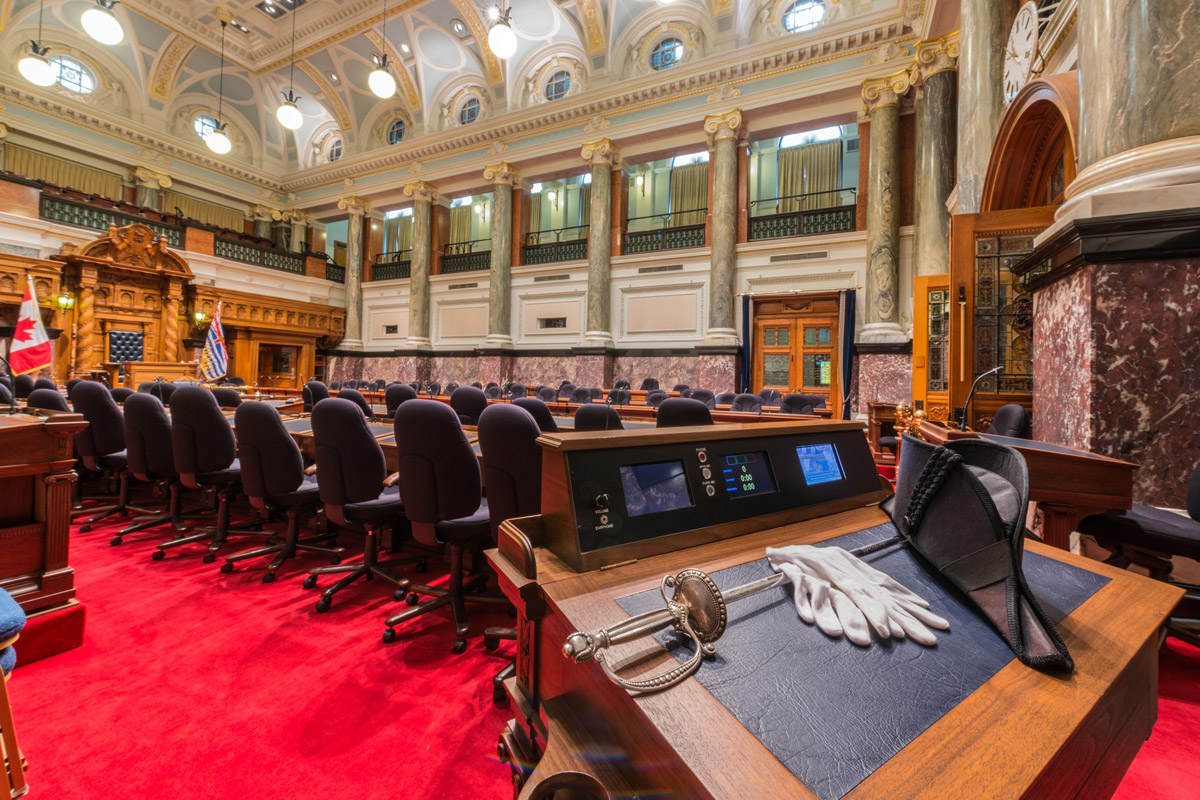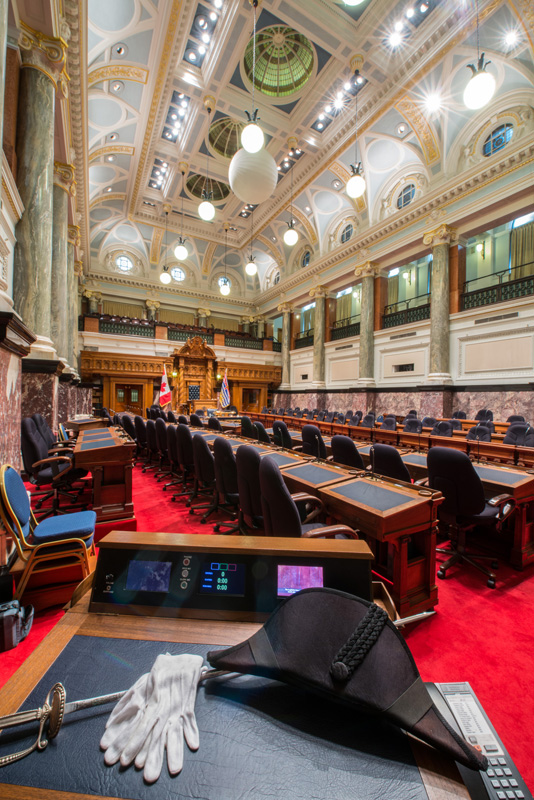The Sergeant-at-Arms is a permanent officer of the Legislative Assembly and is responsible for the ceremonial aspects of the Legislative Assembly and for the administrative and support functions primarily related to security, ensuring that the Assembly, its committees, and its Members are able to conduct their business without disturbance or interruption. In doing so, the Sergeant-at-Arms not only administers access to the Public galleries and other parts of the Parliament Buildings, but also manages the security services for the Legislative Precinct, its occupants, and the public.
Related functions of the Sergeant-at-Arms includes custody over the furnishings in the Legislative Chamber, custody of bills prior to their introduction, the timely distribution of parliamentary documents, as well as overseeing parking facilities and messenger and courier services.
The ceremonial role of the Sergeant-at-Arms involves carrying the mace and walking at the head of the procession that escorts the Speaker, followed by the Clerks, into and out of the Chamber at the opening and closing of the each sitting. The Sergeant-at-Arms is also the guardian of the mace and ensures that it is properly placed on the Clerks' Table when the Assembly sits or on brackets below the table when the Assembly sits as the Committee of the Whole. When in the Chamber, the Sergeant-at-Arms sits at a desk near the Bar of the House, facing the Speaker.
The Sergeant-at-Arms' role has evolved over several centuries of parliamentary tradition, beginning with the appointment of the first Sergeant-at-Arms for the British House of Commons in 1415.



